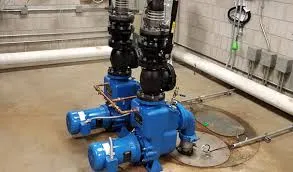Scottish Gaelic
- Afrikaans
- Albanian
- Amharic
- Arabic
- Armenian
- Azerbaijani
- Basque
- Belarusian
- Bengali
- Bosnian
- Bulgarian
- Catalan
- Cebuano
- Corsican
- Croatian
- Czech
- Danish
- Dutch
- English
- Esperanto
- Estonian
- Finnish
- French
- Frisian
- Galician
- Georgian
- German
- Greek
- Gujarati
- Haitian Creole
- hausa
- hawaiian
- Hebrew
- Hindi
- Miao
- Hungarian
- Icelandic
- igbo
- Indonesian
- irish
- Italian
- Japanese
- Javanese
- Kannada
- kazakh
- Khmer
- Rwandese
- Korean
- Kurdish
- Kyrgyz
- Lao
- Latin
- Latvian
- Lithuanian
- Luxembourgish
- Macedonian
- Malgashi
- Malay
- Malayalam
- Maltese
- Maori
- Marathi
- Mongolian
- Myanmar
- Nepali
- Norwegian
- Norwegian
- Occitan
- Pashto
- Persian
- Polish
- Portuguese
- Punjabi
- Romanian
- Russian
- Samoan
- Scottish Gaelic
- Serbian
- Sesotho
- Shona
- Sindhi
- Sinhala
- Slovak
- Slovenian
- Somali
- Spanish
- Sundanese
- Swahili
- Swedish
- Tagalog
- Tajik
- Tamil
- Tatar
- Telugu
- Thai
- Turkish
- Turkmen
- Ukrainian
- Urdu
- Uighur
- Uzbek
- Vietnamese
- Welsh
- Bantu
- Yiddish
- Yoruba
- Zulu
Telephone: +86 13120555503
Email: frank@cypump.com
Sult . 23, 2024 18:17 Back to list
Building an Effective DIY Slurry Pump for Enhanced Fluid Management and Handling
Creating a Homemade Slurry Pump for Efficient Fluid Handling
Slurry pumps are essential tools for industries dealing with the transportation of abrasive mixtures of solids and liquids, often referred to as slurries. These pumps are vital in sectors like mining, construction, and waste management. Manufacturing a homemade slurry pump can serve both practical needs and educational purposes, allowing individuals to understand the underlying mechanics and principles while creating a cost-effective solution for fluid handling. This article outlines how to create an efficient homemade slurry pump.
Understanding the Basics
Before embarking on the construction of a homemade slurry pump, it is important to grasp the basic functionality and components of a typical slurry pump. A slurry pump primarily consists of an inlet for receiving the slurry, a casing to contain the fluid, an impeller to create movement, and an outlet for discharge. The impeller is particularly crucial as it generates the centrifugal force necessary to push the slurry through the system.
Materials Required
To build a homemade slurry pump, you will need the following materials
1. Pump Casing A durable material such as PVC or metal that can withstand the wear and tear from abrasive materials in the slurry. 2. Impeller This can be crafted from a solid piece of plastic or metal that is shaped to allow for effective fluid flow. 3. Motor A small electric motor or a hand-crank mechanism if you prefer a manual pump. 4. Inlet and Outlet Pipes Flexible pipes that will be used to draw in the slurry and discharge it. 5. Sealing Material Gaskets or O-rings to prevent leaks. 6. Miscellaneous Supplies Screws, bolts, a drill, and other tools for assembly.
Step-by-Step Construction
1. Design the Pump Begin by sketching a design of your slurry pump. Consider the size of the casing, the position of the motor, and how the impeller will be mounted. Make sure to account for the type of slurry you plan to pump, as this will affect design choices.
2. Create the Casing Cut the casing material to your desired size and shape. If you're using PVC, ensure that you have the necessary fittings for the inlet and outlet pipes.
creating a homemade slurry pump for efficient fluid handling ...

3. Construct the Impeller Shape your impeller to have curved blades that can effectively push the slurry. The blade angle and the size will impact the efficiency of the pump. Secure the impeller to the motor shaft.
4. Assemble the Components Attach the impeller inside the casing, ensuring it has enough clearance to spin freely. Install the motor on the pump casing, aligning it so that the impeller shaft connects seamlessly.
5. Seal the Joints Use gaskets or O-rings to seal the casing and prevent leaks. Ensure that all attachments are tightly secured.
6. Install Inlet and Outlet Pipes Attach the inlet pipe where the slurry will enter the pump and the outlet pipe where the slurry will be discharged. Make sure that the inlet is submerged sufficiently in the slurry to draw it in effectively.
7. Test the Pump Before full-scale use, it is essential to test the pump with a small volume of slurry. Check for leaks and ensure that the impeller is functioning correctly by observing the flow rate and pressure.
Maintenance and Use
Once your homemade slurry pump is operational, proper maintenance is key to ensuring long-term functionality. Regularly check for wear and tear, especially on the impeller and casing, as abrasive materials can cause significant damage over time. Clean the pump after use to prevent clogging and buildup of slurry materials.
Conclusion
Constructing a homemade slurry pump can be an enriching project that enhances your understanding of fluid dynamics and mechanical engineering principles. While the initial construction requires some effort and understanding of material properties, the end product can serve a variety of practical applications. Whether for industrial uses or experimental purposes, a homemade slurry pump is an excellent addition to any DIY enthusiast's toolkit, facilitating efficient fluid handling and management.
-
ISG Series Vertical Pipeline Pump-Chi Yuan Pumps|Efficient, Durable, Low Noise
NewsAug.06,2025
-
Wear-Resistant Slurry Pump for Mining & Industrial Sludge
NewsAug.06,2025
-
ISG Series Vertical Pipeline Pump: Advanced Solutions for Industrial Fluid Handling|Chi Yuan Pumps Co., LTD
NewsAug.06,2025
-
ISG Series Vertical Pipeline Pump - Chi Yuan Pumps Co., LTD.|High Efficiency&Energy Saving
NewsAug.06,2025
-
ISG Series Vertical Pipeline Pump - Industrial Fluid Handling | Chi Yuan Pumps
NewsAug.05,2025
-
ISG Series Vertical Pipeline Pump - Chi Yuan Pumps Co., Ltd.|Compact Design&Energy Efficiency
NewsAug.05,2025










